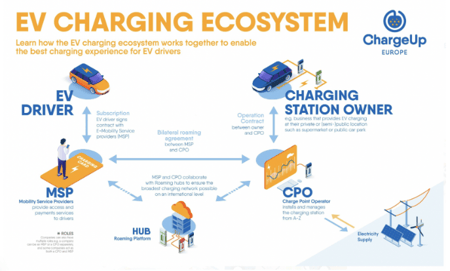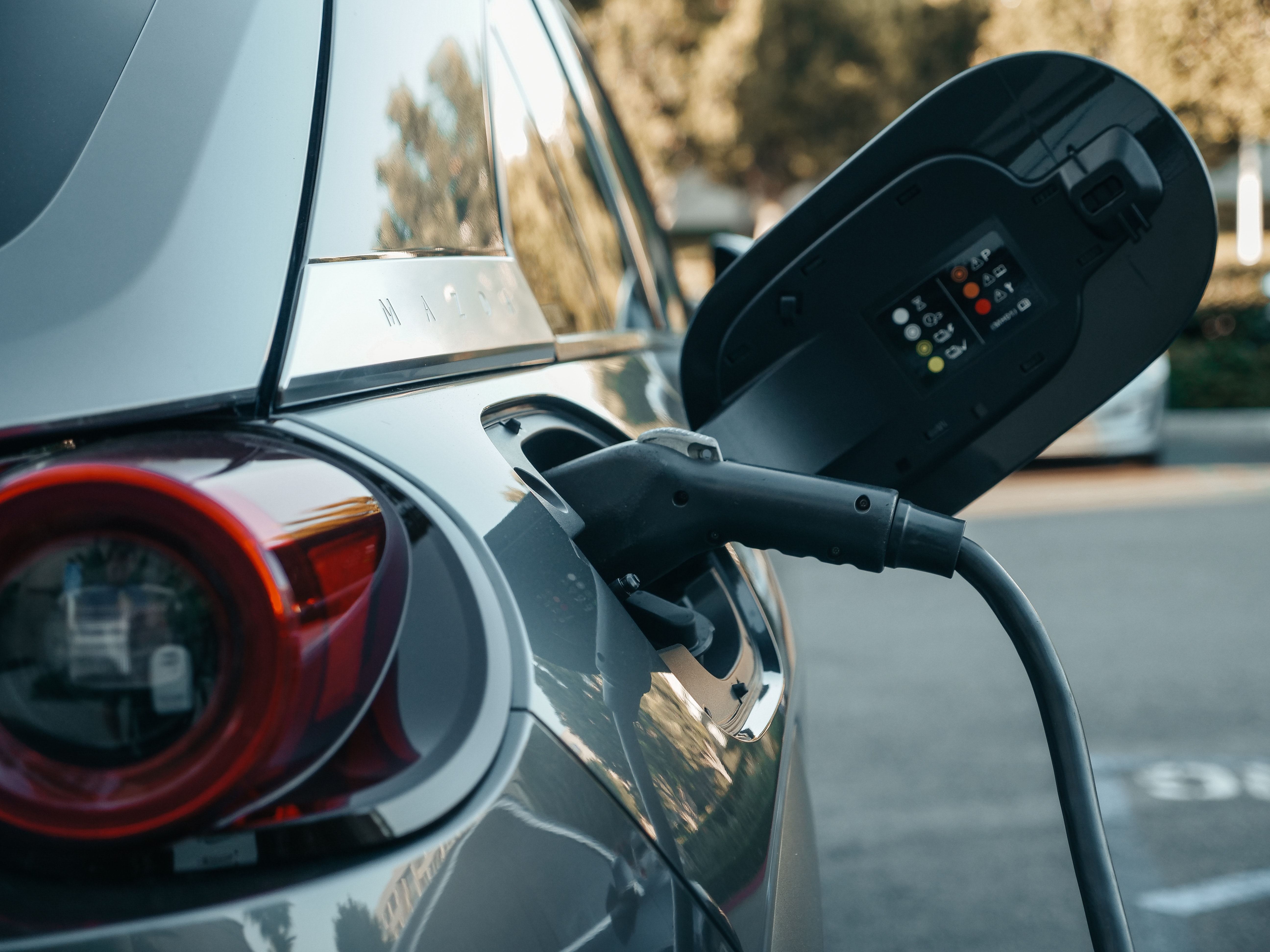Creating a Sustainable Revenue Model
In January 2024, the U.S. federal government announced an additional $623 million in grants dedicated to further expanding the electric charging network throughout the United States. This investment, in conjunction with state funding initiatives, will doubtlessly serve as a catalyst for EV charging companies to escalate the production and deployment of chargers and associated EV infrastructure.
Grants aside, however, EV charging station companies will still be confronted with the ongoing challenge of establishing the kinds of sustainable revenue models that will be essential for the long-term success of their projects. To address this gap between short-term funding and long-term revenue, then, it's imperative for an EV company to come up with a strategic plan that ensures long-term viability and growth.
Here are some revenue-generating and cost-saving ideas to consider as you develop your long-term strategy.
Incorporate Digital Signage into Charging Stations
Incorporating digital signage into EV charging stations can open up several revenue-generating opportunities for an EV charging solution provider. This approach can enhance the customer experience while providing additional value to businesses and advertisers. Here are some ways digital signage can be leveraged for revenue generation:
Advertising Revenue
Digital signage can display advertisements from various advertisers, offering a valuable platform for businesses to reach their target audience. Advertisers might include local businesses, automotive companies, energy companies, or any brand interested in reaching eco-conscious consumers and EV owners. Charging stations in high-traffic areas or specific locations can command higher advertising fees due to the increased visibility and targeted demographic.
Content Partnerships
Establishing partnerships with media providers (like news outlets, entertainment companies, or streaming services) to display content on the digital signage, potentially including exclusive previews, can attract viewers and generate sponsorship revenue. Additionally, providing infotainment options such as news, weather updates, and entertainment can improve the customer experience, making stations more attractive for advertisers who want to engage with a captive audience.
Enhanced Customer Services
Offering premium charging services or memberships that include ad-free or personalized digital content options on the digital signage for an additional fee can also enhance customer services. You can also use interactive digital signage to offer value-added services, such as reservations for nearby restaurants or tickets for local events, where the provider receives a commission for each booking made through the platform.
Data and Analytics
EV chargers equipped with digital signage can gather data on viewer engagement, demographics, and preferences. This data can be invaluable for advertisers to tailor their campaigns, and EV charging providers can charge advertisers for access to these analytics. EV charging station operators can also leverage the data collected to offer advertisers the ability to customize their messages based on the time of day, viewer demographics, or specific events, thus increasing the value and price of advertising slots.
Sponsored Wi-Fi
Offering sponsored Wi-Fi to customers at EV charging station locations can provide several benefits for the charging solution provider and their customers. Here's a breakdown of some of these advantages:
For the Charging Solution Provider
- Increased Customer Satisfaction and Loyalty: Providing free Wi-Fi can enhance the customer experience, making wait times more enjoyable as customers can browse the Internet, work, or stream content while their vehicle charges. This added convenience can leave a positive impression on customers, leading to increased satisfaction and loyalty towards the charging solution provider.
- Competitive Advantage: Offering an amenity like free Wi-Fi can differentiate the provider from competitors who do not offer similar services, potentially attracting more customers. By providing an extra perk that enhances the overall charging experience, the provider stands out in a crowded market and gains a competitive edge.
- Sponsorship Revenue: The provider can generate additional revenue by partnering with companies that sponsor the Wi-Fi service, helping to offset operational costs or invest in further infrastructure improvements. Collaborating with sponsors to offer free Wi-Fi not only benefits customers but also opens up a revenue stream through sponsorship deals, creating a win-win situation for all parties involved.
- Data Collection and Insights: With customers logging into the Wi-Fi network, providers can gather valuable data (with consent) on usage patterns, customer preferences, and demographics, which can inform marketing strategies and service improvements. By analyzing this data, the provider can gain insights into customer behavior and tailor their services to better meet the needs and preferences of their target audience, ultimately enhancing the overall customer experience.
- Marketing and Advertising Opportunities: The login page for the Wi-Fi network can be used to promote the provider's services or offers, or to display ads from the Wi-Fi sponsor, creating another revenue stream or cross-promotion opportunity. By leveraging the Wi-Fi network as a platform for marketing and advertising, the provider can effectively reach customers with targeted promotions, boosting engagement and potentially driving additional revenue through strategic partnerships and advertisements.
For Customers
- Enhanced Charging Experience: Access to free Wi-Fi can make the charging process more pleasant, allowing customers to use their waiting time productively or for leisure. With the ability to stay connected and entertained while their vehicle charges, customers can enjoy a more seamless and enjoyable experience at the charging station.
- Cost Savings: Customers save on mobile data costs by using free Wi-Fi, especially for data-intensive activities like streaming or video conferencing. By offering complimentary Wi-Fi, the provider helps customers save money on their data usage, providing added value and cost savings during the charging process.
- Convenience: Having Internet access on the go, especially in locations where cellular data coverage may be weak or unreliable, adds a layer of convenience for EV drivers. Whether they need to check emails, browse the web, or stay connected with loved ones, having access to free Wi-Fi at the charging station enhances the overall convenience and usability of the facility for customers.
Energy Storage and the Grid
EV charging solution providers and charge point operators (CPOs) should consider the installation of solar panels and photovoltaic (PV) batteries at their charging locations. Integrating PV generation with EV charging stations offers several cost and revenue benefits:
Reduced Dependency on Grid Electricity
 By generating electricity onsite, EV charging stations can reduce their dependency on grid electricity. This is particularly advantageous during peak hours or in areas where the electricity grid is under heavy load or is unreliable: since electricity costs are higher at these times, being able to charge customer vehicles from PV cells instead of from the grid provides huge cost savings to the operators.
By generating electricity onsite, EV charging stations can reduce their dependency on grid electricity. This is particularly advantageous during peak hours or in areas where the electricity grid is under heavy load or is unreliable: since electricity costs are higher at these times, being able to charge customer vehicles from PV cells instead of from the grid provides huge cost savings to the operators.
Energy Autonomy
PV generation provides EV charging stations with a degree of energy autonomy, making them less vulnerable to power outages, electricity price fluctuations, and changes in energy policies. Being able to charge EVs from PV cells means that EV charging stations can continue to operate for some period of time even during a grid power outage, which directly reduces losses from unplanned downtime.
Grid Support
In some configurations, excess electricity generated by PV panels at EV charging stations can be fed back into the grid, providing additional power during periods of high demand. This not only supports the stability of the local grid but can also generate additional revenue through feed-in tariffs or net metering arrangements, where applicable.
Final Thoughts
The potential for enhanced revenue generation in the EV charging industry above and beyond simply providing electricity is vast, especially when considering innovative strategies like incorporating digital signage, offering sponsored Wi-Fi, and integrating solar energy solutions. By embracing these opportunities, EV charging companies can not only enhance the customer experience but also create new streams of revenue and contribute to a more sustainable future.
As the industry continues to evolve and grow more crowded with EVSPs and CPOs, it's essential for companies to stay ahead of the curve and adapt to changing market dynamics. By focusing on strategic planning and innovative solutions, EV charging companies can position themselves for success in the rapidly growing electric vehicle market. Embracing these ideas and exploring new possibilities will be key to staying competitive and driving the industry forward.
 By generating electricity onsite, EV charging stations can reduce their dependency on grid electricity. This is particularly advantageous during peak hours or in areas where the electricity grid is under heavy load or is unreliable: since electricity costs are higher at these times, being able to charge customer vehicles from PV cells instead of from the grid provides huge cost savings to the operators.
By generating electricity onsite, EV charging stations can reduce their dependency on grid electricity. This is particularly advantageous during peak hours or in areas where the electricity grid is under heavy load or is unreliable: since electricity costs are higher at these times, being able to charge customer vehicles from PV cells instead of from the grid provides huge cost savings to the operators.

